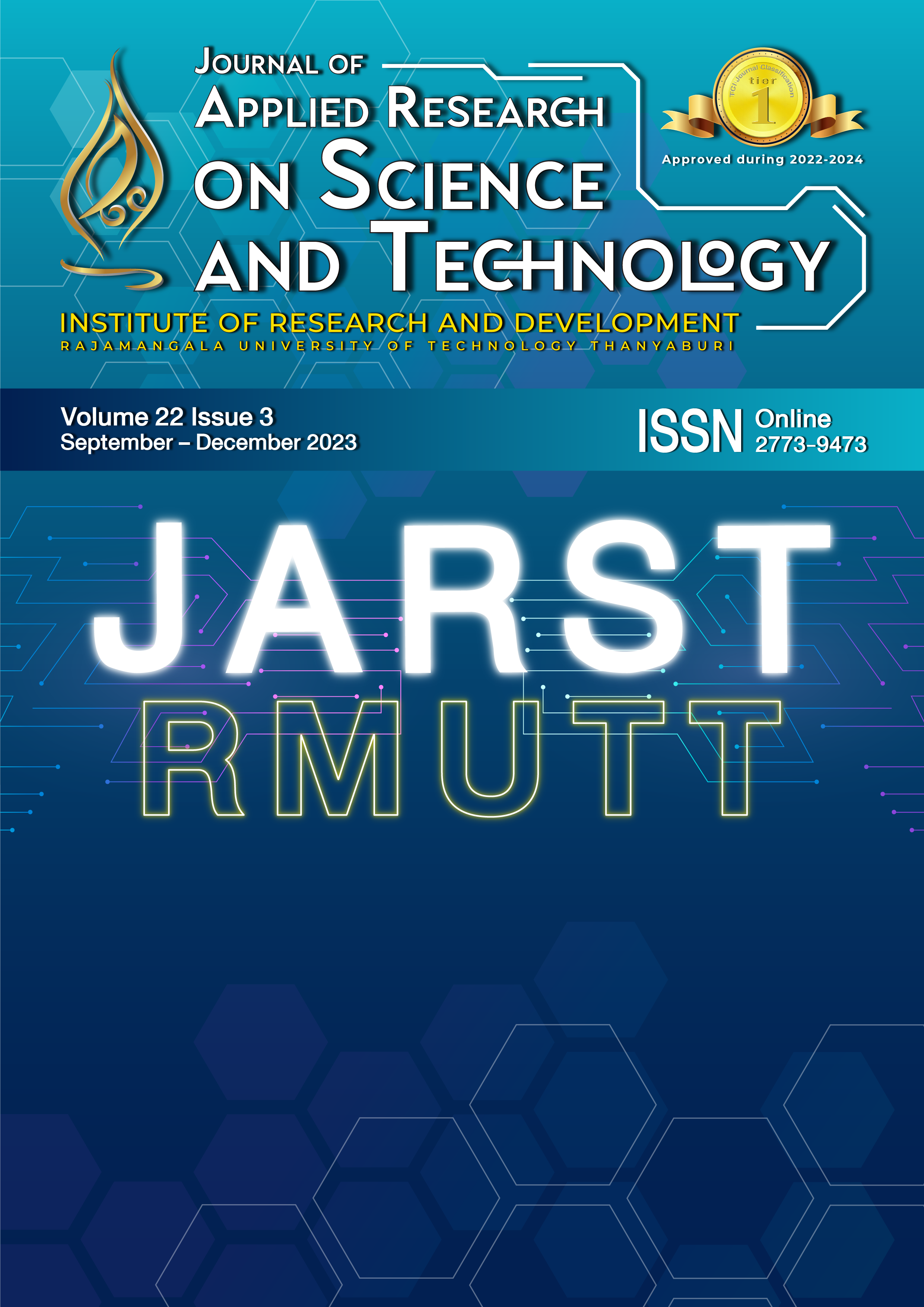Optimization of ballistic vest for protective atrocity and stabbing
Main Article Content
Abstract
In the optimization of the ballistic vest to prevent atrocity and stabbing, two fabrics were utilized: a ballistic plate made of synthetic fiber Endumax® Shield XF 33 and Twaron® SRM 509. Test the thickness and weight of the fabric before being tested for atrocity and stabbing protection. Finally, test the ammunition protection. The results were as follows: (1) The thickness of Twaron® and Endumax® fabrics. The average was 0.44300 and 0.22000 mm., and the standard deviation and variance were low. (2) The weight of Twaron® and Endumax® fabrics. The average was 1.99300 and 1.45100 g., and the standard deviation and variance were low. (3) Protective atrocity P1/B at the L2, E1 level, the average energy is 33.176 joules. The average blade depth is 0 mm., within the specified standard. Protective atrocity P1/B at the L2 and E2 levels has an energy average of 50.52 joules. The average blade depth is 1 mm., which is also within the specified standard criteria. (4) Protective stabbing SP/B at the L2 and E1 levels, the energy average is 33.54 joules. The average blade depth is 0 mm., within the specified standard. Protective stabbing SP/B at the L2 and E2 levels, the average energy is 49.894 joules. The average blade depth is 7.6 mm., which is also within the specified standard criteria. (5) Ballistic vest plate test with 0.44 MAG SJHP ammunition 240 g. The average bullet velocity was 437.78 m/s. The collapse footprint is 19.6 mm., within the specified standard. Tested with 9 mm. FMJ ammunition 124 g. The average bullet velocity was 438.15 m/s. The collapse footprint is 18 mm., which is also within the specified standard criteria. From various test results, it can be concluded that the ballistic vest provides excellent protection according to military standards and is suitable for security officials' work.
Article Details

This work is licensed under a Creative Commons Attribution-NonCommercial-NoDerivatives 4.0 International License.
References
Khojitmate S. Research and development of bulletproof vests. National Defense College. (NDC); 2011.
Khojitmate S. Research and manufacture of lightweight bulletproof vests, class III (NIJ). Defense Science and Technology Department. (DSTD); 2017.
Chailak C. A Study of the Influence of Compressive Strength on Nylon Woven Fabrics on Bullet Penetration. Rajamangala University of Technology Thanyaburi. (RMUTT); 2009.
Ankaew S. Feasibility study of bonding nylon 66 fibers by compression process as a bulletproof component in automobiles. Rajamangala University of Technology Thanyaburi. (RMUTT); 2008.
Putsri C. A Study of the Properties of Woven Fabrics on the Penetration of Bullets. Rajamangala University of Technology Thanyaburi. (RMUTT); 2011.
Siripokanan T. Development of bulletproof vest using aluminum 5083. Rajamangala University of Technology Lanna. (RMUTL); 2011.
Rajchit S. A study of the properties of AISI 316l stainless steel bulletproof vest. Rajamangala University of Technology Lanna. (RMUTL); 2014.
Gresczcuk LB. Response of Isotropic and Composite Materials to Particle Impact, Foreign Object Impact Damage to Composites, ASTM STP 568: American Society for Testing and Materials; 1975.
Croft J, Longhurst D. HOSDB Body Armour Standards for UK Police. Part 1: General Requirements. Publication No. 39/07/A: Scientific Development Branch; 2007.
Croft J, Longhurst D. HOSDB Body Armour Standards for UK Police. Part 2: Ballistic Resistance. Publication No. 39/07/B: Scientific Development Branch; 2007.
National Institute of Justice. NIJ Standard 0101.04, Ballistic Resistance of Personal Body Armor: U.S. Department of Justice; 2000.
National Institute of Justice. NIJ Standard 0101.06, Ballistic Resistance of Body Armor: U.S. Department of Justice; 2008.
National Institute of Justice. NIJ Standard 0108.04, Ballistic Resistance of Protective Materials: U.S. Department of Justice; 2003.


